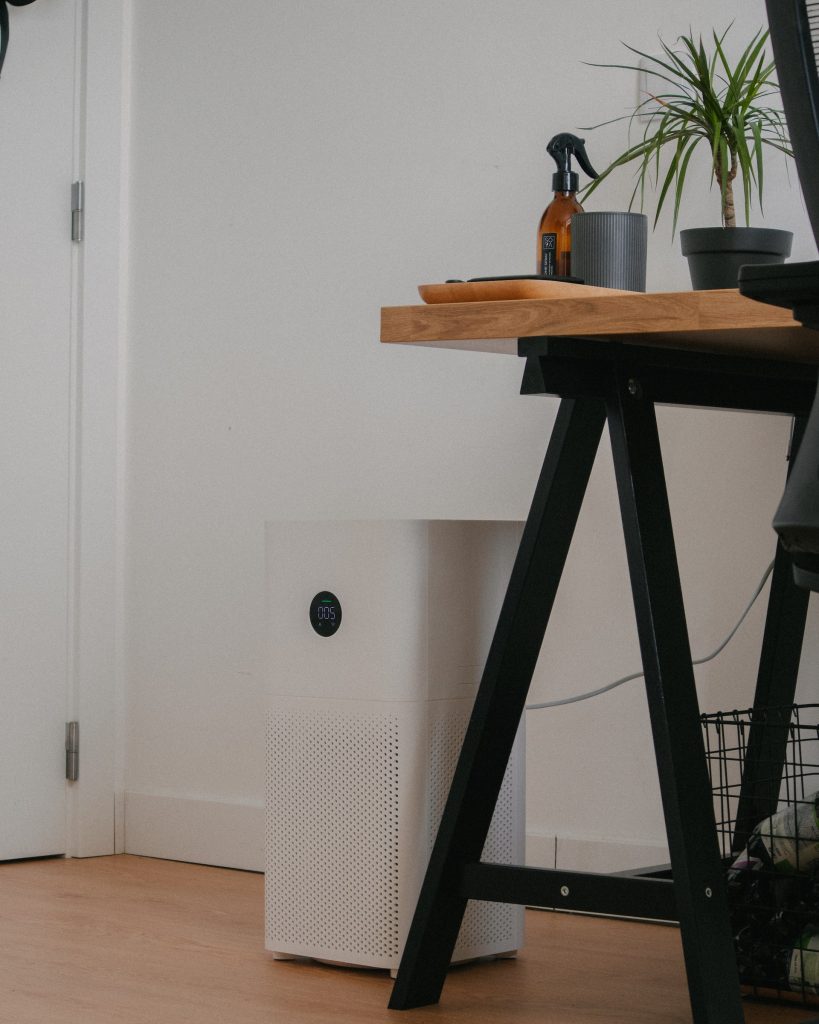Lower temperatures, heating systems, and closed-up houses can all contribute to creating dry air in your house. Fortunately, there are many actions you can take to create more moisture in dry house air, improving the quality of your home environment and promoting better health.
Signs Your Home is Too Dry
Static Electricity – Have you ever walked across the carpet in your home and touched someone only to get a little zap? That’s static electricity and it happens when your home is too dry.
Breathing Difficulties – If you are waking up or regularly experiencing a dry throat, nose, or other cold-like symptoms, it’s a sign that the air is too dry. You might even be having difficulty with your breathing throughout the day. Continual exposure to dry air can cause damage to your mucous membrane. This membrane prevents inflammation of your respiratory system by acting as a natural barrier. When it is worn down by dry air, you are subject to getting more infections, colds, and flu. You may even begin to experience nose bleeds due to dryness and irritation.
Dry Skin – Without moisture in the air around you, your skin and lips may begin to feel like the Sahara. It is common to develop what is called the “winter itch” from dry, itchy skin that results from depleted moisture. Dry skin also leaves you more open to infections that may enter more easily through cracked skin.
Floor or Wall Damage – If your home is consistently dry, it can affect the wood and paint of the interior. Wooden floors may buckle or warp. Paint may crack and flake. Many homeowners don’t realize that a certain level of moisture is necessary to home health.
What Causes Dry Air in a House?
Dry air is most often a result of central heating that evaporates much of the natural moisture found in your home. Poor insulation can also be responsible for allowing heat to escape and take the moisture with it or allowing it to leach into the walls where it gets trapped and creates mold and mildew.
However, the cool air from air conditioning also tends to be lower in humidity, so if you are periodically running your AC during the warmer part of the day and your home already leans toward the dryer side, it may be lending to the problem. Don’t discount air conditioning dry air when considering adjustments in your home.
If you are experiencing signs of dry air in your home, you can test to find out the severity of the problem. Simply purchase an inexpensive hygrometer from your local DIY, hardware store, or online to measure moisture levels. This device is similar to a thermometer, but it measures moisture instead of temperature. You can even buy small digital ones in packs to place in different areas of your home.
Ideally, the moisture level of your home should fall between 30 and 50 percent humidity. If you are registering a moisture level below 30 percent, you’ll want to invest in a humidifier to correct the problem. If you’re just below this range, you might get by with making some of the simpler changes given for increasing moisture levels. Anything over 50 percent means you have the opposite problem and need a dehumidifier. It is common for some homes to possess both as homes tend to be drier in winter and moister in summer.
Dry Air Solutions
If you are dealing with dry air in your house, there are some actions you can take to correct the problem.
Reduce Oven Use – Many don’t realize that the heat from your oven serves to further dry out the air in your home. Cooking on the stovetop doesn’t have the same drying effect. Stovetop cooking can help put moisture back in the air from steam escaping from the food. While everyone likes to bake from time to time, do your best to limit it if you are experiencing a dry indoor climate.
Air-Dry Dishes – If you use a dishwasher, open the door once the rinse cycle ends and pull the rack out. Letting the dishes air-dry allows moisture to make its way back into the air. Your dishes will still get dry, but they’ll serve a useful purpose while doing so and you’ll save money by skipping the automatic drying function.
Line Dry Laundry – Like the dishes, your clothes will give off moisture if you allow them to dry naturally on an indoor line or rack. Line drying is also cheaper than using an electric or gas dryer and eliminates the additional wear and tear to your clothes from dryer friction.
Bathroom Steam – If you live alone or shower at a time that allows you to leave the door open while you do so, the steam of the hot water you use escaping into your home outside the bathroom can help put moisture back in the air. Likewise, you will reap the same benefits from a hot bath if you allow the steam to escape into the house.
Commercial Humidifiers – As the colder months begin to creep in, your heating system will be put to greater use, creating dry air. When this happens, many homeowners will mistake the dry air for coolness and adjust their thermostats to a higher setting, creating even drier air in the process. A single-room or whole-house humidifier will eliminate your dry air troubles and help your home feel warmer without turning up the heat unnecessarily.
DIY Hydration – If your home isn’t excessively dry, you can create moisture in the air by simply setting out small containers of water to evaporate into the air. This is especially effective if you place them on floor vents where heat rises but be careful when placing them in areas where they might be subject to being overturned.
Radiator Humidifiers – If you have radiators in your home, you can make use of them by hanging small containers of water from them. The heat coming from the radiator will create moisture from evaporation, sending it back into the air. Just remember to refill them as needed.
Whatever the reason for the dry air in your house, knowing is half the battle. If you are experiencing a continual problem with dry house air, consult a professional to evaluate your need for a humidifier that will best serve your needs.
[related_posts_by_tax posts_per_page="3" format="thumbnails" image_size="medium"]









